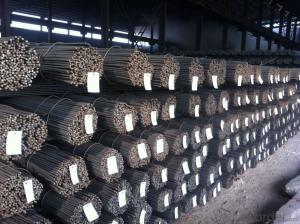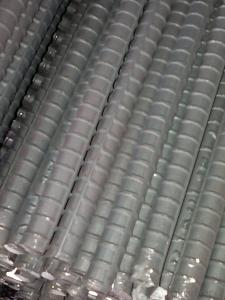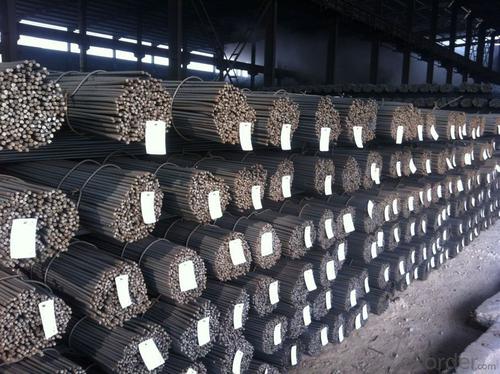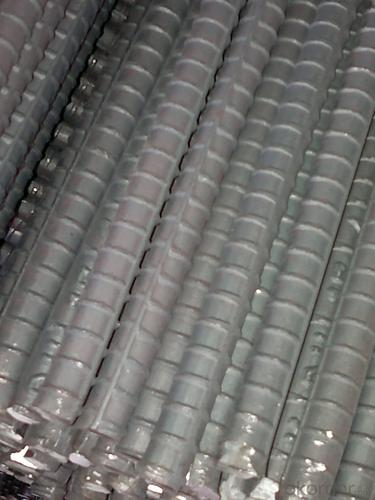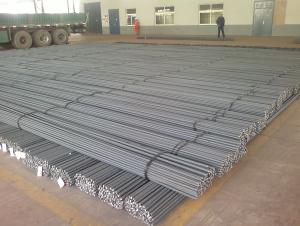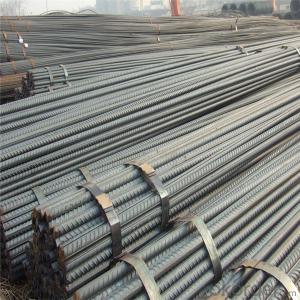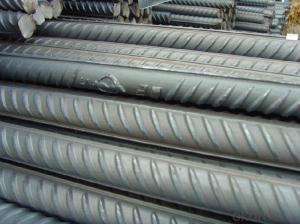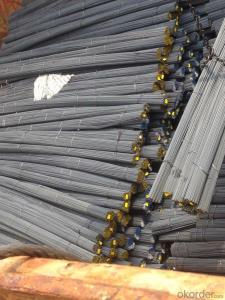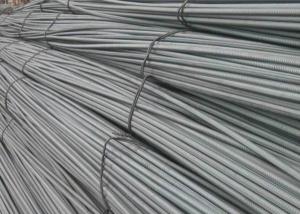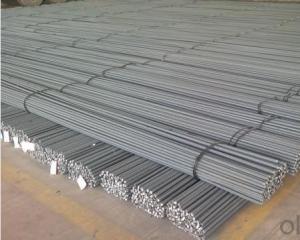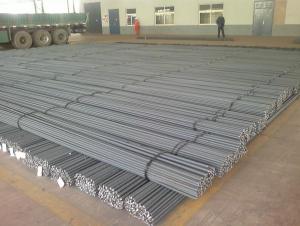Deformed Steel Rebars for Construction Concrete
- Loading Port:
- China main port
- Payment Terms:
- TT OR LC
- Min Order Qty:
- 100 m.t.
- Supply Capability:
- 10000 m.t./month
OKorder Service Pledge
OKorder Financial Service
You Might Also Like
Product Description:
OKorder is offering Deformed Steel Rebars for Construction Concrete at great prices with worldwide shipping. Our supplier is a world-class manufacturer of steel, with our products utilized the world over. OKorder annually supplies products to African, South American and Asian markets. We provide quotations within 24 hours of receiving an inquiry and guarantee competitive prices.
Product Applications:
Deformed Steel Rebars for Construction Concrete are ideal for structural applications and are widely used in the construction of buildings and bridges, and the manufacturing, petrochemical, and transportation industries.
Product Advantages:
OKorder's Deformed Steel Rebars for Construction Concrete are durable, strong, and wide variety of sizes.
Main Product Features:
· Premium quality
· Prompt delivery & seaworthy packing (30 days after receiving deposit)
· Can be recycled and reused
· Mill test certification
· Professional Service
· Competitive pricing
Product Specifications:
Manufacture: Hot rolled
Grade: HRB335,HRB400,HRB500
Certificates: ISO, SGS, BV, CIQ
Length: 6m – 12m, as per customer request
Packaging: Export packing, nude packing, bundled
Deformed Steel Bar | ||
Diameter (MM) | Cross Sectional Area (MM2) | Theorectical Weight (KG/M) |
6 | 28.27 | 0.222 |
8 | 50.27 | 0.395 |
10 | 78.54 | 0.617 |
12 | 113.1 | 0.888 |
14 | 153.9 | 1.21 |
16 | 201.1 | 1.58 |
18 | 254.5 | 2 |
20 | 314.2 | 2.47 |
22 | 380.1 | 2.98 |
25 | 490.9 | 3.85 |
28 | 615.8 | 4.83 |
32 | 804.2 | 6.31 |
36 | 1018 | 7.99 |
40 | 1257 | 9.87 |
FAQ:
Q1: Why buy Materials & Equipment from OKorder.com?
A1: All products offered byOKorder.com are carefully selected from China's most reliable manufacturing enterprises. Through its ISO certifications, OKorder.com adheres to the highest standards and a commitment to supply chain safety and customer satisfaction.
Q2: How many tons of steel products could be loaded in containers?
A2: Usually the steel products are delivered by bulk vessel because of the large quantity and the freight. However, there are no bulk vessel enter some seaports so that we have to deliver the cargo by containers. The 6m steel product can be loaded in 20FT container, but the quantity is changed according to the size, usually from 18tons to 25tons.
Q3: How soon can we receive the product after purchase?
A3: Within three days of placing an order, we will arrange production. The normal sizes with the normal grade can be produced within one month. The specific shipping date is dependent upon international and government factors, the delivery to international main port about 45-60days.
Images:
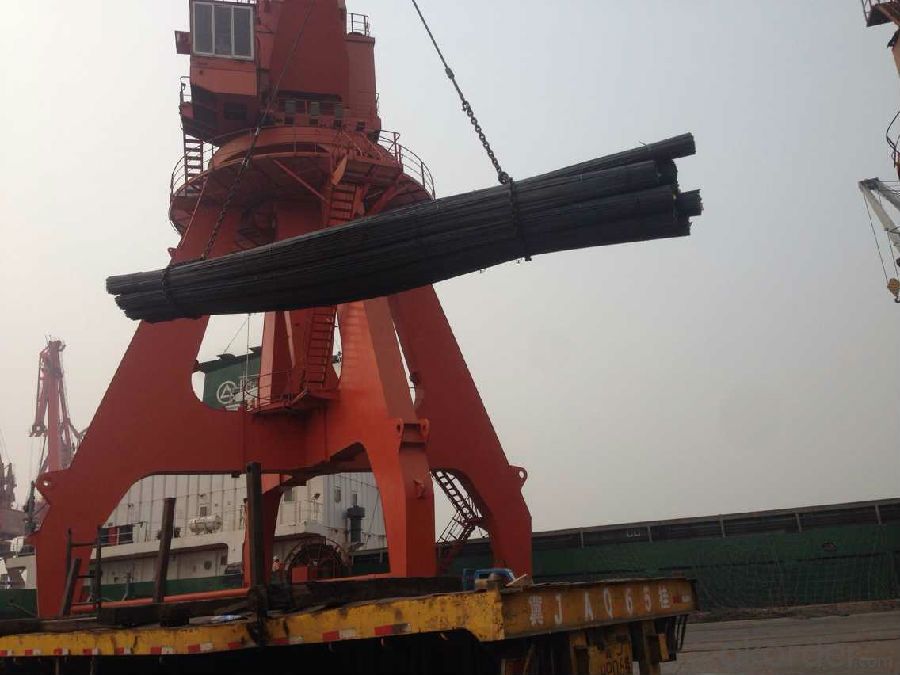
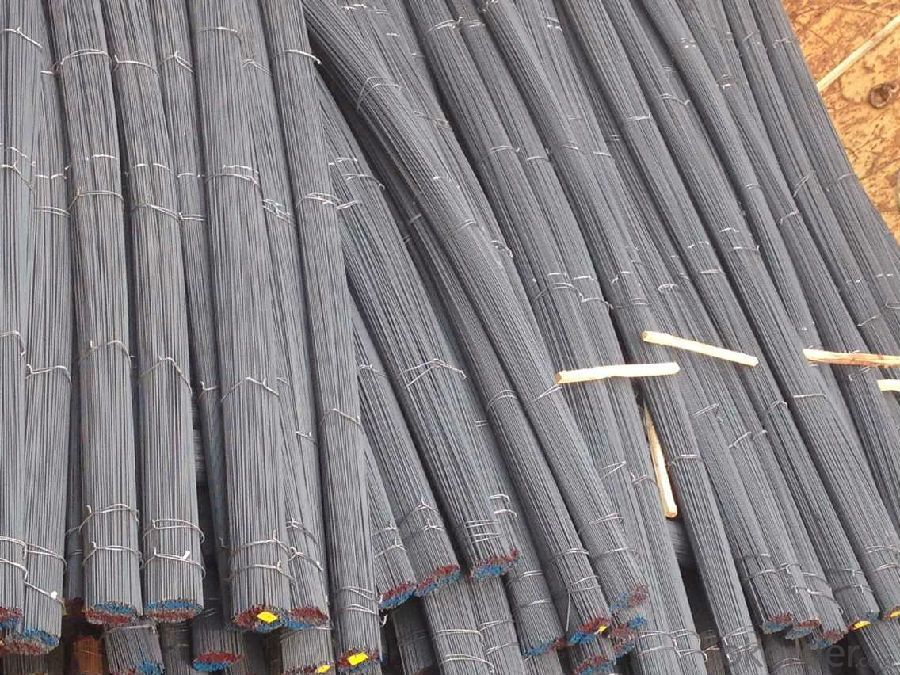
- Q: Can steel rebars be used in renovation or retrofitting projects?
- Absolutely, renovation or retrofitting projects can indeed make use of steel rebars. In construction, steel rebars are frequently employed to fortify concrete structures and they can also be utilized in renovation endeavors to bolster pre-existing structures. When refurbishing or retrofitting a building, it often becomes imperative to reinforce the current structure in order to comply with modern building codes or support additional burdens. Strengthening walls, columns, beams, or slabs can be achieved by incorporating supplementary reinforcement into the concrete, thanks to the utilization of steel rebars. By integrating steel rebars into a renovation project, the building's structural soundness can be enhanced, thereby ensuring its safety and durability.
- Q: How do steel rebars improve the durability of concrete structures?
- Steel rebars improve the durability of concrete structures in several ways. Firstly, steel rebars act as reinforcement in concrete, providing added strength and stability to the structure. When combined with concrete, the high tensile strength of steel rebars helps to resist cracking and prevent the structure from collapsing under heavy loads or seismic activities. Secondly, steel rebars help to control the formation and propagation of cracks in concrete structures. Concrete is strong in compression but weak in tension, meaning it tends to crack when subjected to tensile forces. By placing steel rebars strategically within the concrete, these cracks are minimized and prevented from spreading, thus enhancing the overall durability of the structure. Furthermore, steel rebars help to improve the resistance of concrete structures against corrosion. Concrete is highly alkaline, which forms a protective layer around the steel rebars, preventing them from rusting. This corrosion resistance ensures that the rebars maintain their structural integrity over time, reducing the risk of deterioration and enhancing the longevity of the concrete structure. In addition, steel rebars also enhance the fire resistance of concrete structures. Due to their high melting point, steel rebars can withstand high temperatures, thereby preventing the concrete from losing its structural integrity during a fire. This added fire resistance ensures that the concrete structure remains stable and safe in the event of a fire, further enhancing its durability. Overall, the inclusion of steel rebars in concrete structures significantly improves their durability by providing added strength, controlling cracks, enhancing corrosion resistance, and increasing fire resistance. These benefits contribute to the longevity and safety of concrete structures, making them more reliable and sustainable in the long run.
- Q: How do steel rebars contribute to sustainable construction practices?
- Steel rebars contribute to sustainable construction practices in several ways: 1. Durability: Steel rebars are highly durable and have a long lifespan, which reduces the need for frequent replacements or repairs. This helps in minimizing waste generation and conserving resources. 2. Structural strength: Steel rebars provide superior strength and structural integrity to reinforced concrete. This allows for the construction of tall buildings and structures, reducing the need for land consumption and promoting vertical growth in urban areas. 3. Energy efficiency: Steel rebars are produced using energy-efficient manufacturing processes, reducing the carbon footprint associated with their production. Additionally, their use in reinforced concrete structures improves energy efficiency by reducing the need for additional insulation materials. 4. Recyclability: Steel rebars are 100% recyclable, meaning they can be melted down and reused in new construction projects. This reduces the demand for virgin steel, conserving natural resources and reducing greenhouse gas emissions associated with steel production. 5. Waste reduction: The use of steel rebars in reinforced concrete structures reduces the amount of construction and demolition waste generated. By providing a strong and durable structure, it minimizes the need for frequent renovation or replacement, thus reducing waste generation in the long run. 6. Seismic resistance: Steel rebars enhance the seismic resistance of buildings and structures by improving their ability to withstand earthquakes and other natural disasters. This ensures the safety of occupants and reduces the reconstruction efforts required after such events, contributing to sustainable development. Overall, the use of steel rebars in construction promotes sustainability by reducing waste, conserving resources, improving energy efficiency, and enhancing the durability and resilience of structures.
- Q: How do steel rebars contribute to the strength of concrete?
- Steel rebars contribute to the strength of concrete by providing reinforcement and increasing its tensile strength. The rebars are embedded in the concrete, forming a strong bond between the two materials. This helps to distribute the load evenly and prevent cracks or fractures from forming, making the concrete structure more resistant to bending, shearing, and other external forces.
- Q: What are the guidelines for ensuring proper concrete cover over steel rebars?
- Proper concrete cover over steel rebars is crucial for the long-term durability and performance of reinforced concrete structures. Here are some guidelines to ensure the correct concrete cover over steel rebars: 1. Follow building codes and specifications: Building codes and specifications provide minimum requirements for concrete cover over steel rebars. These guidelines are established to ensure structural integrity, fire resistance, and resistance to corrosion. It is essential to consult and adhere to the applicable building codes and specifications for the specific project. 2. Determine the required concrete cover: The required concrete cover depends on various factors, such as environmental conditions, exposure to aggressive agents, structural design, and reinforcement type. Structural engineers typically determine the required concrete cover based on these factors to ensure the rebars are adequately protected. 3. Use appropriate concrete mix design: The concrete mix design should be carefully selected to achieve the desired strength, durability, and workability. The mix design should consider factors like the quality and size of aggregates, cement content, water-to-cement ratio, and use of additives or admixtures. Using a well-designed concrete mix will help ensure proper bonding and adequate protection of the steel rebars. 4. Maintain proper construction practices: During construction, it is crucial to maintain proper practices to ensure the correct concrete cover over steel rebars. This includes using proper formwork and reinforcement placement techniques, ensuring proper concrete placement, compaction, and curing. The rebars should be adequately positioned and securely tied to maintain the required cover and prevent displacement during concrete pouring. 5. Inspect and monitor during construction: Regular inspections and monitoring at various stages of construction are essential to ensure compliance with the required concrete cover. This includes checking reinforcement placement, cover thickness, and overall quality of the concrete. Any deviations from the specified requirements should be addressed and rectified promptly. 6. Protect against corrosion: Adequate concrete cover over steel rebars plays a significant role in protecting against corrosion. However, additional measures such as using corrosion-resistant rebars, applying epoxy coatings, or using corrosion inhibitors can further enhance the durability and longevity of the reinforced concrete structure. 7. Document and maintain records: It is important to document the construction process, including the reinforcement placement, concrete cover thickness, and any deviations or modifications made during construction. This documentation will serve as a valuable resource for future reference, maintenance, and repairs. By following these guidelines, proper concrete cover over steel rebars can be ensured, resulting in durable and structurally sound reinforced concrete structures. It is always recommended to consult with structural engineers and construction professionals for specific project requirements and to ensure compliance with local building codes and regulations.
- Q: What is the composition of steel rebars?
- Steel rebars, also known as reinforced steel bars or reinforcing bars, are commonly used in construction projects to provide strength and reinforcement to concrete structures. The composition of steel rebars typically consists of primarily iron, with varying amounts of carbon and other alloying elements. The main component of steel rebars is iron, which provides the base material for their construction. Iron is combined with carbon to form steel, and the carbon content in rebars is generally around 0.2-0.3% by weight. This carbon content helps enhance the strength and hardness of the steel, making it suitable for reinforcing concrete structures. In addition to iron and carbon, steel rebars may also contain small amounts of other alloying elements, such as manganese, silicon, and sulfur. These elements are added in controlled quantities to improve specific properties of the steel, such as its durability, corrosion resistance, and weldability. Moreover, steel rebars are often produced with a ribbed or deformed surface to enhance their bond with the surrounding concrete. These surface deformations create a mechanical interlock between the rebar and the concrete, increasing the overall strength and stability of the reinforced structure. It is important to note that the exact composition of steel rebars may vary depending on the specific grade or standard being followed. Different countries and organizations may have their own specifications for steel rebars, which can dictate the allowable range of alloying elements and other parameters. Overall, the composition of steel rebars primarily consists of iron, carbon, and small amounts of other alloying elements, with the specific details varying based on the grade and standard being used.
- Q: Can steel rebars be used in sustainable construction practices?
- Yes, steel rebars can be used in sustainable construction practices. Steel is a highly durable material that can be recycled, reducing the need for new production and minimizing environmental impact. Additionally, steel rebars provide strength and structural integrity to constructions, allowing for longer lifespan and reduced maintenance requirements. By incorporating steel rebars in sustainable construction practices, we can promote resource efficiency and minimize the overall environmental footprint.
- Q: Can steel rebars be used in foundations and footings?
- Yes, steel rebars can be used in foundations and footings. Steel rebars are commonly used to reinforce concrete structures, including foundations and footings, to provide added strength and stability. They help to prevent cracking and increase the structural integrity of the foundation or footing.
- Q: How do steel rebars bond with concrete?
- Steel rebars bond with concrete through a process called mechanical interlock, where the rough surface of the rebar provides better adhesion to the concrete. Additionally, the alkaline environment of the concrete forms a thin layer of iron oxide on the surface of the rebar, which further enhances the bond and prevents corrosion.
- Q: How do steel rebars prevent concrete structures from spalling?
- Steel rebars prevent concrete structures from spalling by providing reinforcement and increasing the overall strength of the concrete. Spalling refers to the cracking and breaking off of the concrete surface, usually due to the expansion of internal pressure from various external factors such as temperature changes, moisture, or structural loads. When steel rebars are embedded within the concrete, they act as a support system that helps distribute the applied loads more evenly throughout the structure. This reinforcement prevents localized stress concentrations, which can lead to spalling, by absorbing and dissipating the load. By reinforcing the concrete, rebars enhance its tensile strength and improve its ability to withstand external forces. Moreover, steel rebars also help to control the formation of cracks in the concrete. As concrete is a brittle material with low tensile strength, it is prone to cracking under stress. However, the presence of rebars inhibits the propagation of cracks by bridging them and transferring the stress to the surrounding concrete. This prevents the cracks from spreading and ultimately leads to a more durable and resilient structure. Additionally, steel rebars provide protection against corrosion. Concrete is naturally alkaline, which creates a protective layer on the steel surface, preventing it from rusting. This alkaline environment acts as a barrier against corrosion, ensuring the rebars maintain their structural integrity over time. By avoiding corrosion, the rebars can continue to provide reinforcement and prevent spalling in the concrete structure. In summary, steel rebars play a crucial role in preventing spalling in concrete structures by providing reinforcement, improving tensile strength, controlling crack formation, and protecting against corrosion. By enhancing the overall stability and durability of the concrete, rebars ensure that the structure can withstand various external pressures and maintain its integrity for an extended period.
Send your message to us
Deformed Steel Rebars for Construction Concrete
- Loading Port:
- China main port
- Payment Terms:
- TT OR LC
- Min Order Qty:
- 100 m.t.
- Supply Capability:
- 10000 m.t./month
OKorder Service Pledge
OKorder Financial Service
Similar products
Hot products
Hot Searches
Related keywords
